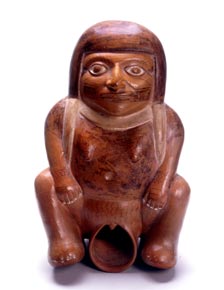
1.) “Ancient Woodland” is a term used in the United Kingdom to refer specifically to woodland dating back to 1600 or before (in England and Wales), or 1750 (in Scotland). Before this, planting of new woodland was uncommon, so a wood present at these dates was likely to have developed naturally. By this definition Ancient Woodland may have had considerable artificial interference, the important characteristic being continuity of woodland on the land.
By contrast, in the US, “old growth” is often used to imply a forest has experienced little direct disruption during contemporary historical epochs and looks about as it would had Europeans not come to America. This criterion is difficult to apply, since it is often impossible to determine the history of human management (Euro-American or Native American). And, since landscapes are naturally dynamic, there can be no certainty what forests would look like now had pre-Columbian regimes been uninterrupted.
from http://en.wikipedia.org/wiki/Old_growth_forest#Defining_.E2.80.9Cold_growth.E2.80.9D
see also: Locations of remaining intact forests
~ ~ ~ ~ ~
2.) Click here to see a photo of the Joshua Tree, a yucca plant.
(Not to be confused with yuca, which is cassava, a plant with an edible root which resembles yam, which is used to make tapioca (cassava root, that is, not yam).)
~ ~ ~ ~ ~
3.) Salvinorin A has no actions at the 5-HT2A serotonin receptor, the principal molecular target responsible for the actions of ‘classic’ hallucinogens, such as mescaline and LSD.
from http://en.wikipedia.org/wiki/Salvia_divinorum#Chemistry
~ ~ ~ ~ ~
4.) It's interesting that it hasn't been made illegal...
In the United States, salvia is not regulated under the Controlled Substances Act but some states, including Delaware, Louisiana, Missouri and others, have passed their own laws. Several other states have proposed legislation against salvia, including Alabama, Alaska, California, Florida, Iowa, New Jersey, New York, Ohio, Oregon, Pennsylvania, and Texas. Many of these proposals have not made it into law, with motions having failed, stalled or otherwise died, for example at committee review stages.
from http://en.wikipedia.org/wiki/Salvia_divinorum#Legal_status
~ ~ ~ ~ ~

from the Moche of Peru (100-750 AD?),
as the below photographed item (from 100 AD,
connected somehow to cassava (see above))

see here for more (erotic sculptures) (I would recommend it!)
(I like the second from the bottom in the middle column.)
No comments:
Post a Comment